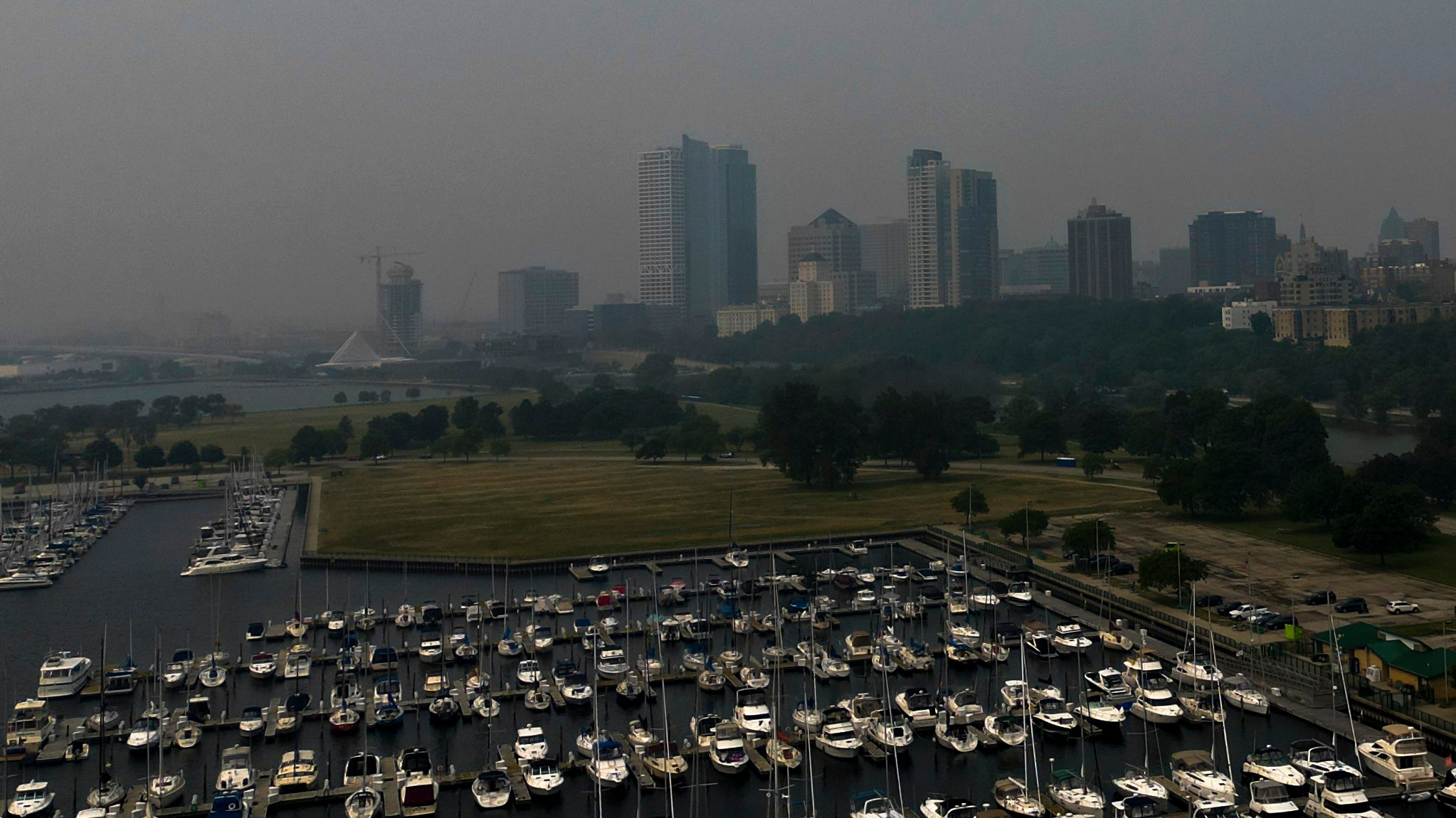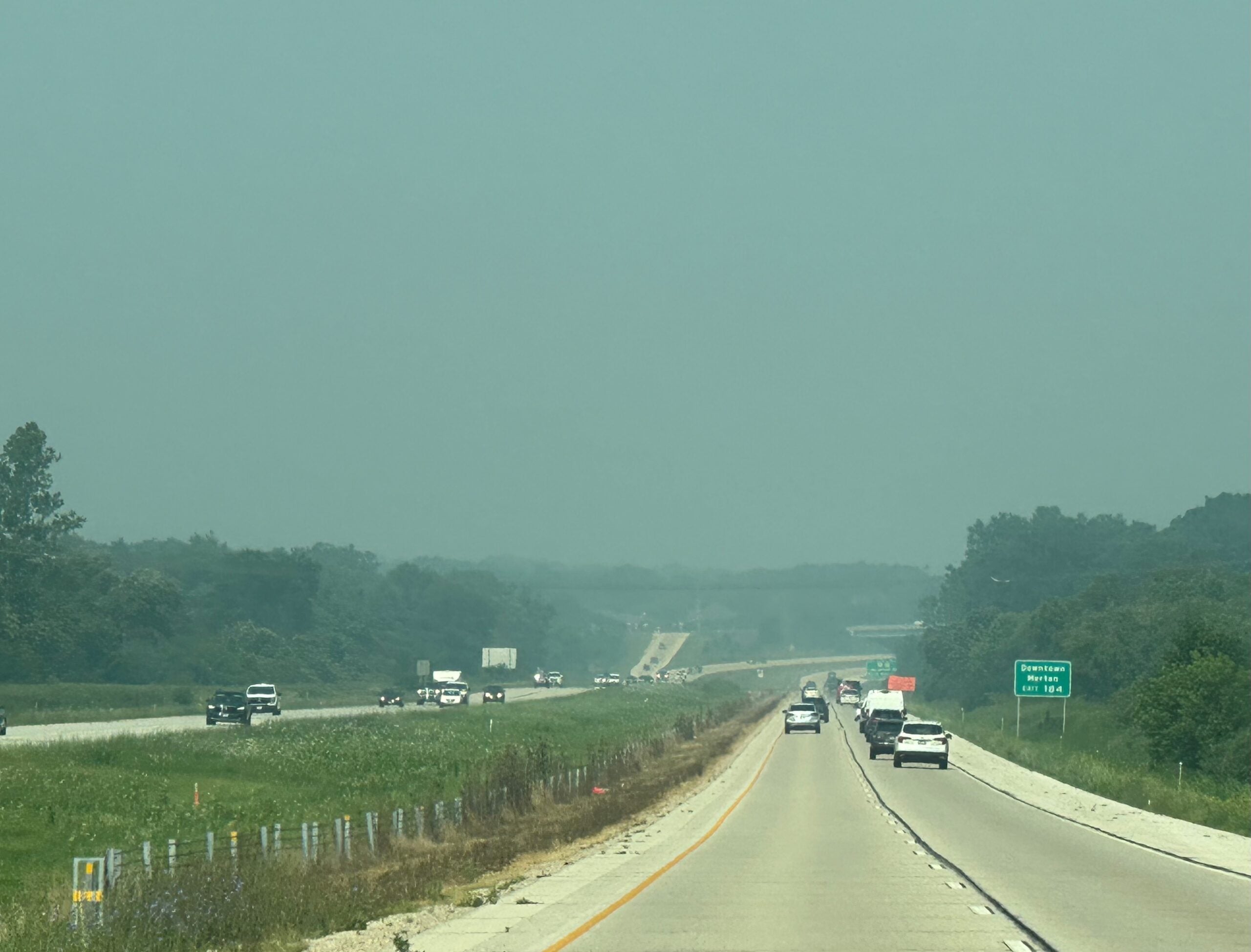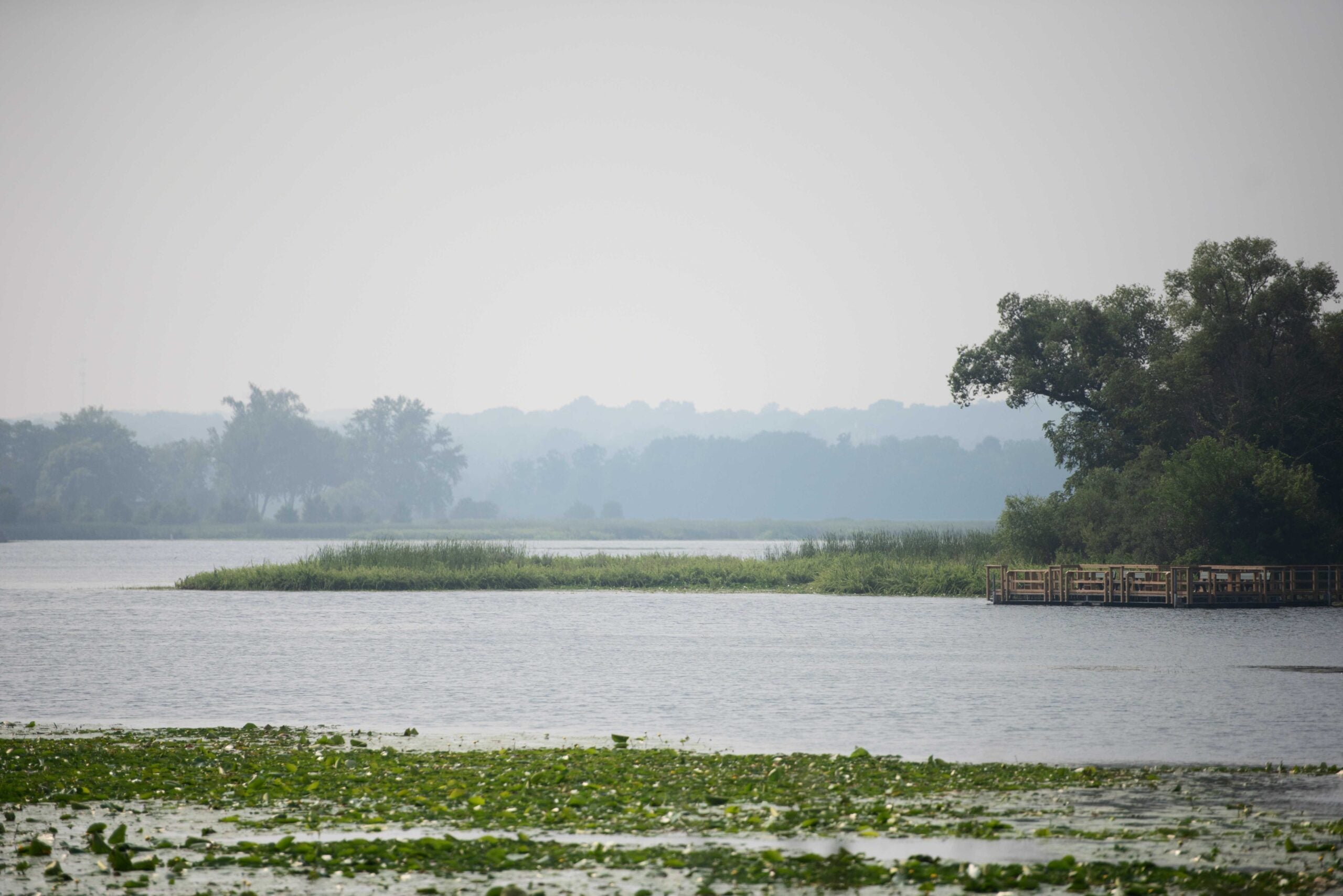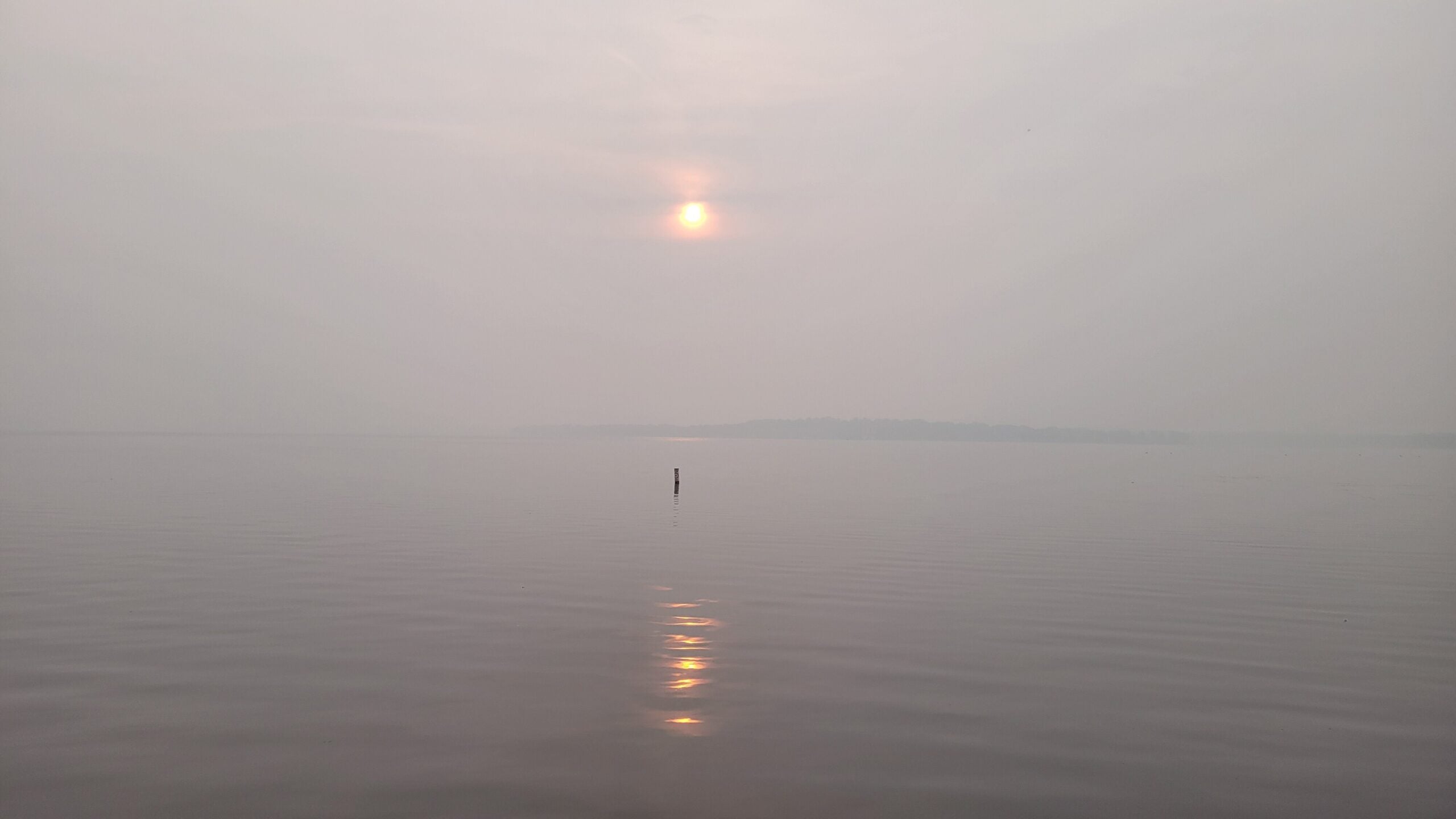Canadian wildfire smoke spurred the most air quality advisories Wisconsin has seen in more than a decade. The haze got so thick in June the state issued its first “very unhealthy” advisory.
The orange skies and persistent smell of smoke was unavoidable for many parts of the Badger State this year. Data from the Wisconsin Department of Natural Resources show there have been 15 air quality advisories as of Aug. 18. That’s more than any year since 2010.
The DNR issues air advisories when levels of tiny particles or ozone in the lower atmosphere reach unhealthy levels.
News with a little more humanity
WPR’s “Wisconsin Today” newsletter keeps you connected to the state you love without feeling overwhelmed. No paywall. No agenda. No corporate filter.
The wildfire smoke drifting and lingering in Wisconsin this year contained heavy concentrations of particles measuring 2.5 microns or smaller, which is known in the scientific community as PM2.5.
DNR Air Management Program Outreach Coordinator Craig Czarnecki told WPR particles that small can pass deep into the lungs and even enter the bloodstream.
“That can affect our heart and lung function,” Czarnecki said. “So, especially dangerous for sensitive groups, people like children and the elderly, pregnant women, and then the people who have existing heart or respiratory conditions.”
The bulk of the PM2.5 advisories this year came during the spring. On June 27, the smoke was so thick the DNR issued a new kind of warning in southeastern Wisconsin.
“That was the first time we recorded the ‘very unhealthy’ level in Milwaukee,” Czarnecki said. “And then we also hit that level that same week in Madison and Baraboo as well.”
Between 2007 and 2010, the state saw other spikes in PM2.5 air quality advisories, but Czarnecki said a majority of those were associated with temperature inversions. That’s when warm air in the upper atmosphere traps cooler air near the ground and prevents particles from dispersing. Still, those were more regional in nature, Czarnecki said, while 2023 has seen more statewide advisories.
DNR data show Wisconsin also saw the third most ozone air quality advisories over a 16-year period. Czarnecki said ozone forms near Earth’s surface when chemicals like nitrogen oxides and volatile organic compounds interact with heat and sunlight on hot days.
Emissions from cars and trucks are the most common sources of those chemicals, but Czarnecki said wildfire smoke has played a role.
“We had some aged wildfire smoke in the area and that kind of helped ozone levels spike along the Lake Michigan shoreline earlier this summer,” Czarnecki said.
There were 19 ozone advisories issued in Wisconsin this year. In 2012, another hot and sunny summer, there were 26.
Wisconsin Public Radio, © Copyright 2026, Board of Regents of the University of Wisconsin System and Wisconsin Educational Communications Board.




